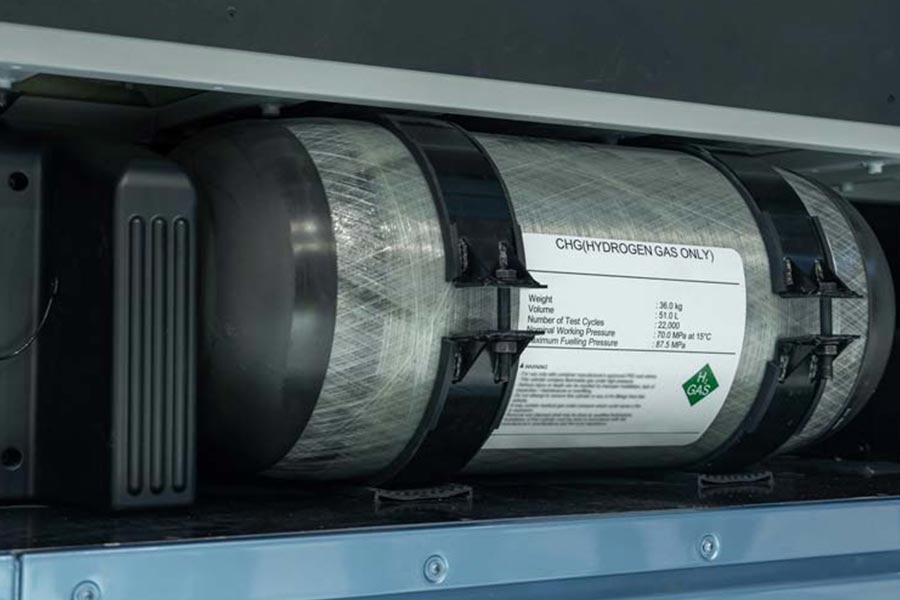The 3 T’s of Hydrogen: Trash, Trucks, and Transit
By: GenH2 Staff
Read Time: 3 minutes
The US is Already Utilizing the 3 T’s of Hydrogen as an Energy Source in Denver, Cleveland and San Bernardino
Hydrogen can be used in just about anything one can imagine, from engines to generating electricity. Beyond just “fuel cells” (which are actual hydrogen electric cells) in automobiles, hydrogen is the future for semi-trucks, light rail trains, shipping, and hydrogen-powered drones. What many consumers might not yet realize, is that the age of hydrogen is here. U.S. cities like Denver, CO and Cleveland, OH are beginning to utilize hydrogen as an energy source, following in the footsteps of the State of California, which has the largest number of hydrogen fuel cell electric vehicles (FCEVs) of any state and one of the largest hydrogen filling stations networks in the world. These filling stations service the 3 T’s of Hydrogen: trash, trucks and transit industries, which are necessary to the continued successful deployment of the hydrogen economy.
Trash
Hydrogen garbage trucks are the next solution in helping reduce emissions in urban cities across America. Hydrogen-powered refuse collection trucks are already on the streets in places like Sweden and Scotland and are being tested throughout Europe. The trucks are better for city air and noise quality because they are completely silent and provide the operational capabilities of diesel trucks, without the emissions. Projects like Liquidation of Full Emission and Noise by Garbage Truck with Hydrogen (LIFE ’N Grab HY!) are also demonstrating hydrogen electric hybrid trucks in the Netherlands and Belgium.
Trucks
The AAA Colorado has announced an agreement with Denver-based New Day Hydrogen, LLC, in which it will introduce America’s first hydrogen-powered tow trucks and other emergency rescue vehicles in Colorado. As part of the partnership, New Day Hydrogen will design and construct stations that use electrolysis, a process that creates emissions-free hydrogen from water and renewable energy, in anticipation those stations eventually will open to the public.
AAA officials believe that by working with a local company to push forward such technology in the state in a way that it can be seen by a wider audience — particularly anyone needing roadside assistance from the nonprofit — it can accelerate the hydrogen movement. The organizations are aiming for the fleet of hydrogen-powered tow trucks to be on the road in 2022.
In Canton, Ohio, one-fourth of the buses in the Stark Area Regional Transit Authority’s fleet run on hydrogen. Also, two California transit systems, in Oakland and Riverside County, have hydrogen buses in their fleets and the Port of Los Angeles began a hydrogen test in April, when the first of five semi-trucks with hydrogen powertrains began hauling freight to warehouses in Ontario, California, about 60 miles away. The $82.5 million public-private project eventually will have a fleet of 10 semis.
Trains
America’s first hydrogen fuel cell train is expected to be operational in San Bernadino, California in 2024. Already in public service in places like Germany and China, hydrogen trains create their own electricity onboard by running hydrogen from a tank and oxygen from the ambient air through a fuel cell. That electricity powers a motor that runs the wheels and on-board “right-sized” battery pack that buffers electricity flow and the only emission is potable water. These hydrogen electric trains are being hash tagged on Twitter as #Hydrail.
The San Bernadino Transit Center will be a multi-modal transit hub that can provide access to all points west. When completed, the project will house the Arrow commuter line, featuring specially designed zero-emission hydrogen electric “fuel cell” powered trains. The zero-emission units will be the first of their kind in North America. The Arrow system is expected to be operational in 2021 and the hydrogen train, according to Mass Transit Magazine is expected to go into service in 2024.
The hydrogen age is now, and the role of hydrogen in the 3 T’s are expected to make a positive disruptive technology impact as the use of hydrogen-powered transportation is well underway and companies like GenH2 are focusing on liquid hydrogen infrastructure solutions for heavy-duty truck and rail applications.
 Copyright All Rights Reserved GenH2
Copyright All Rights Reserved GenH2
 Copyright All Rights Reserved GenH2
Copyright All Rights Reserved GenH2 Copyright All Rights Reserved GenH2
Copyright All Rights Reserved GenH2